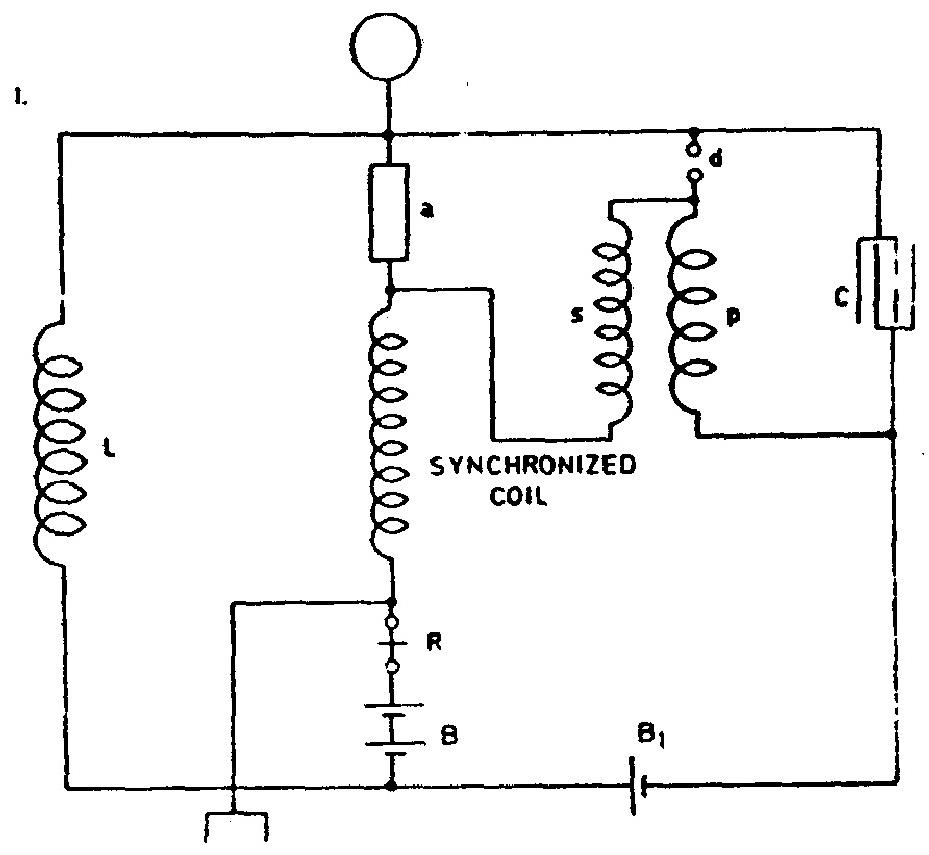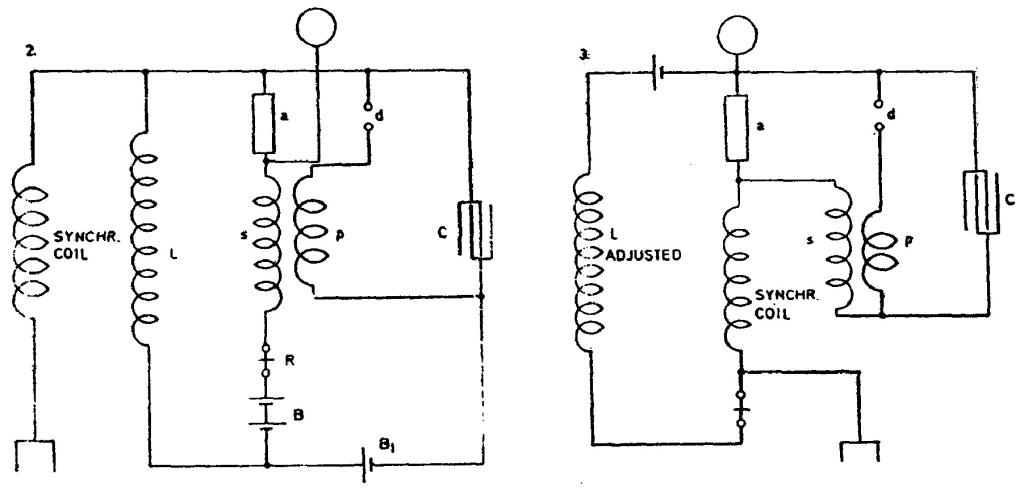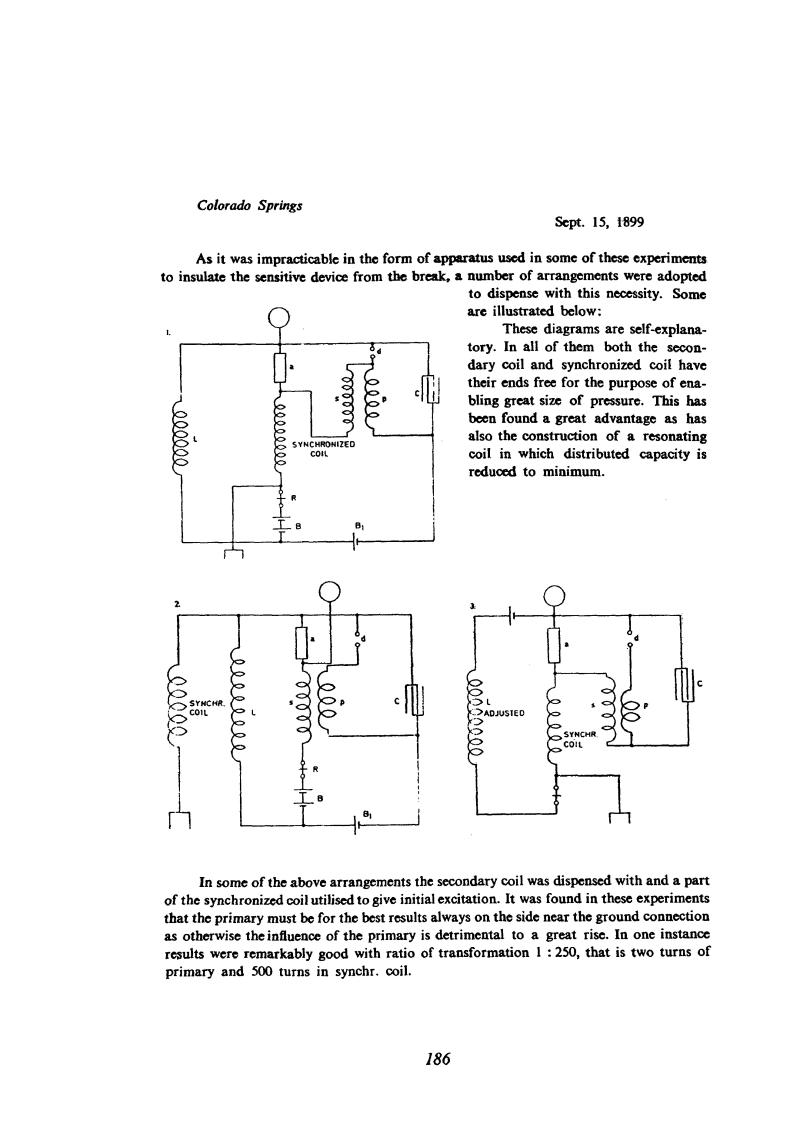
Nikola Tesla Books
Colorado Springs
Sept. 15, 1899
As it was impracticable in the form of apparatus used in some of these experiments to insulate the sensitive device from the break, a number of arrangements were adopted to dispense with this necessity. Some are illustrated below:
These diagrams are self-explanatory. In all of them both the secondary coil and synchronized coil have their ends free for the purpose of enabling great size of pressure. This has been found a great advantage as has also the construction of a resonating coil in which distributed capacity is reduced to minimum.
In some of the above arrangements the secondary coil was dispensed with and a part of the synchronized coil utilised to give initial excitation. It was found in these experiments that the primary must be for the best results always on the side near the ground connection as otherwise the influence of the primary is detrimental to a great rise. In one instance results were remarkably good with ratio of transformation 1 : 250, that is two turns of primary and 500 turns in synchr. coil.
186
September 15-17
The receivers described on September 5th, Fig. 3, and September 11th, Fig. 2, include âtunedâ coils whose function is similar to that of the âsynchronizedâ coils shown in the diagrams of September 15th. Tesla did not make a detailed analysis of these receivers, nor do any of his patents on receivers refer to similar circuits. It therefore seems that we do not have sufficient information to draw any reliable conclusions about their sensitivity or their ultimate purpose (for example it is not clear whether they are just for registering signals or for receiving intelligence).
September 15-17
In receivers shown on Sept. 5, Fig. 3, and Sept. 11, Fig. 2, it was indicated that "adjusted coils have similar roles to the "synchronous" coils shown on Figures given on Sept. 15. Tesla did not analyze in detail the operation of these receivers, and he did not work out the similar circuits in a group of the patents which are related to the receivers. That is why it seems to us that he does not have sufficient data on which he could safely draw a conclusion about the sensitivity of these receivers as well as on their final application (e.g., it could not be seen whether they were planned to be used for the registration of the signals or for the message receiving.)



